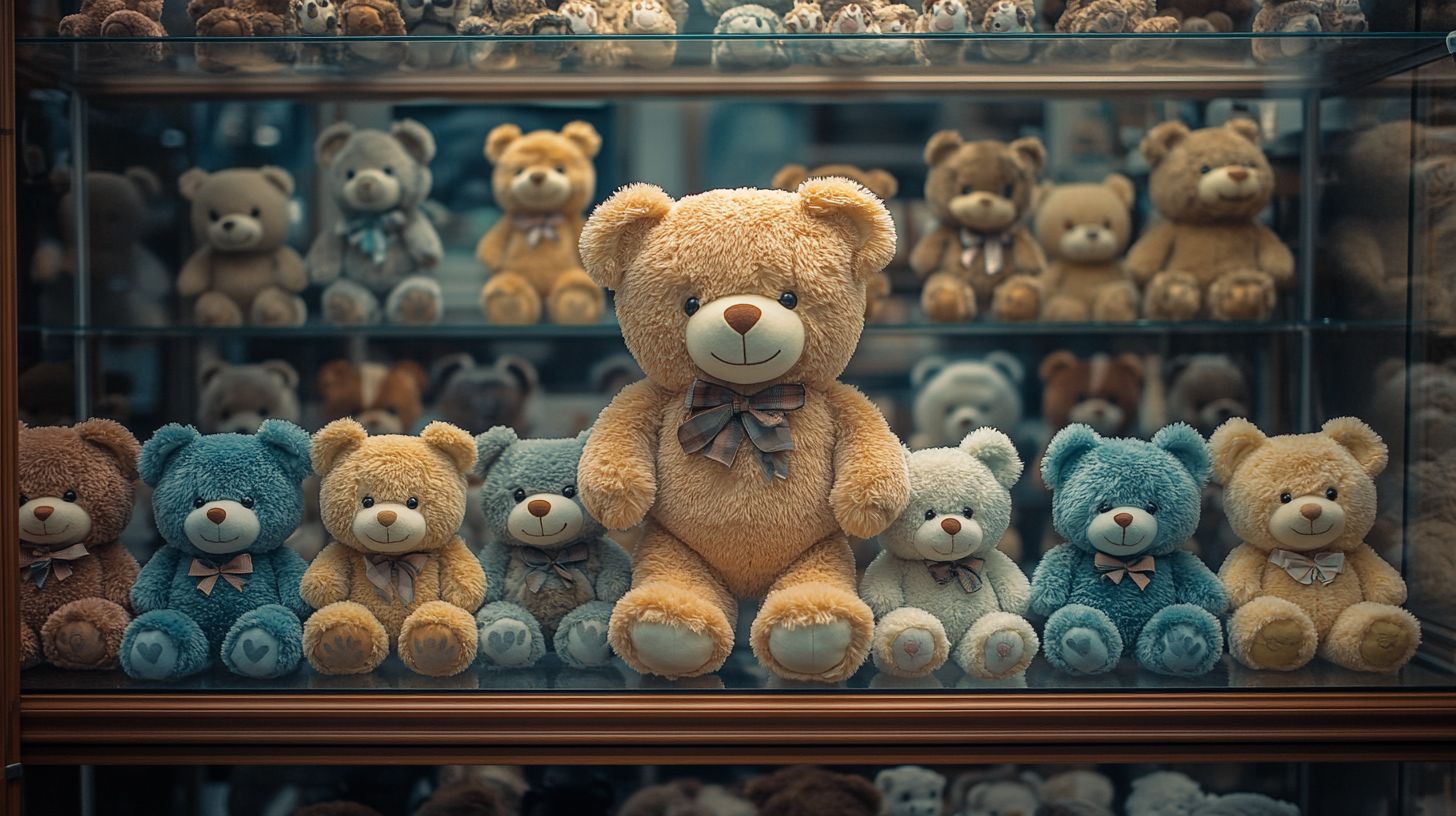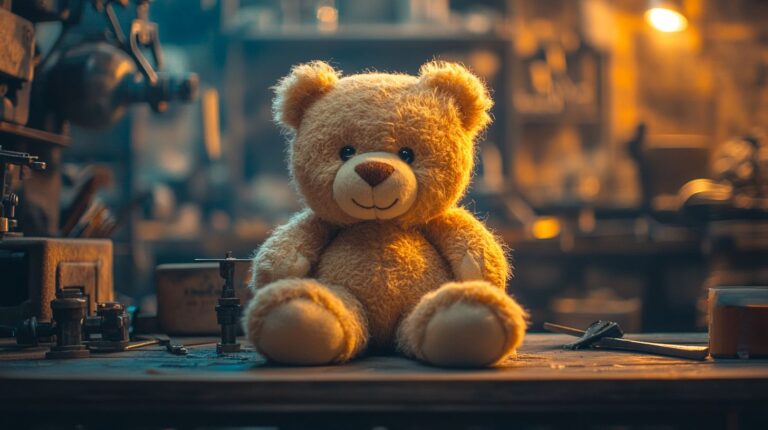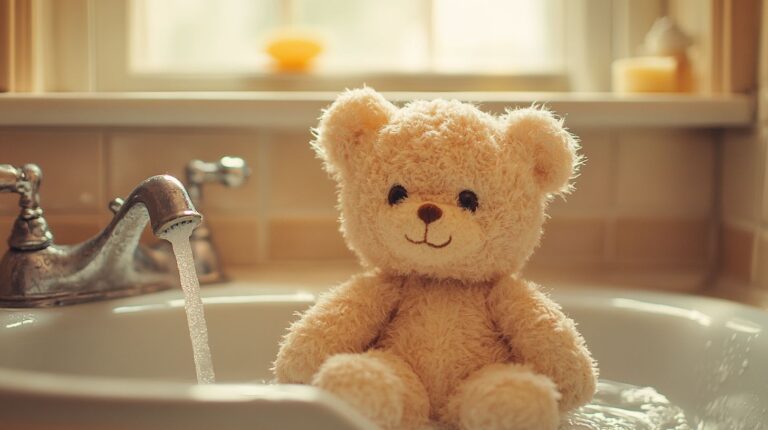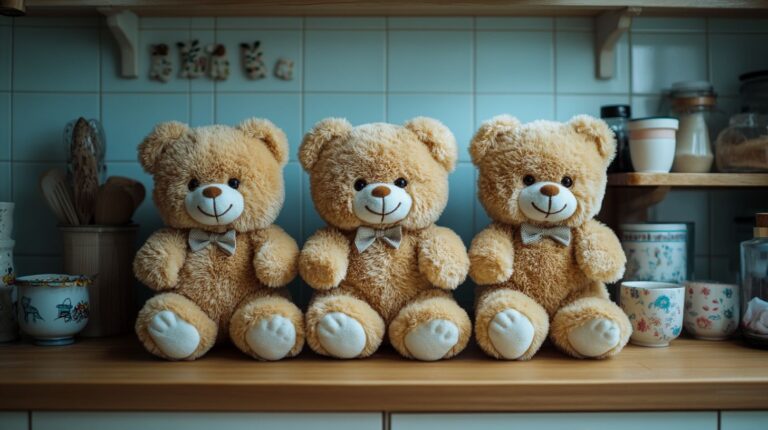Looking after those treasured teddies isn't half as fiddly as some might think. The sweet spot for storage is a cosy 18-22°C with humidity hovering around 45-55% – I've found my spare bedroom cupboard absolutely perfect for this. Before tucking them away, give your furry friends a proper wash with lukewarm water and a splash of mild detergent, though do make certain they're bone dry afterwards.
Clear plastic boxes with proper snap-shut lids work brilliantly, and I rather fancy positioning the bears upright, propped up with acid-free tissue paper to keep their shape. It's worth remembering these cherished chaps don't much care for bright sunlight, so tuck them somewhere shady. Pop round for a quick check each month – you'll want to keep an eye out for any unwelcome visitors or signs of wear and tear.
Mind you, if you're serious about your collection, it's rather sensible to keep detailed notes. A few snaps and jotted particulars of each bear might seem a faff now, but you'll be grateful for the records as your collecting journey continues. Trust me on this one – proper documentation's an absolute godsend when you're deep into preservation.
Key Takeaways
Proper Storage for Your Cherished Bears
Looking after teddy bears properly can feel a bit fussy, but it's worth getting right. Pop them in clear plastic boxes with tight-fitting lids – the temperature should hover around 18-22°C, and you'll want to keep the humidity sensible at 45-55%. Best keep them out of bright sunlight too, as it plays havoc with their fur.
Before tucking your bears away, give them a proper wash with lukewarm water and mild soap. Just make absolutely certain they're bone-dry before boxing them up, or you'll end up with musty-smelling teddies.
For vintage bears especially, it's crucial to position them carefully. Stand them upright with a bit of breathing room – about 2.5cm between each one should do the trick. I've found acid-free tissue paper brilliant for supporting wobbly old joints, particularly on those precious antique specimens.
Do check on your collection monthly – a gentle brush of the fur keeps them looking smart, and it's worth having a proper look at any loose stitching whilst you're at it. Rather like rotating your mattress, shuffling their positions stops permanent creases forming.
Forget about storing them in dodgy spots like basements or lofts – they'll only get damp or too hot. A spare bedroom cupboard or under-bed storage box works brilliantly, keeping your furry friends at a steady temperature all year round.
Choose the Perfect Storage Location
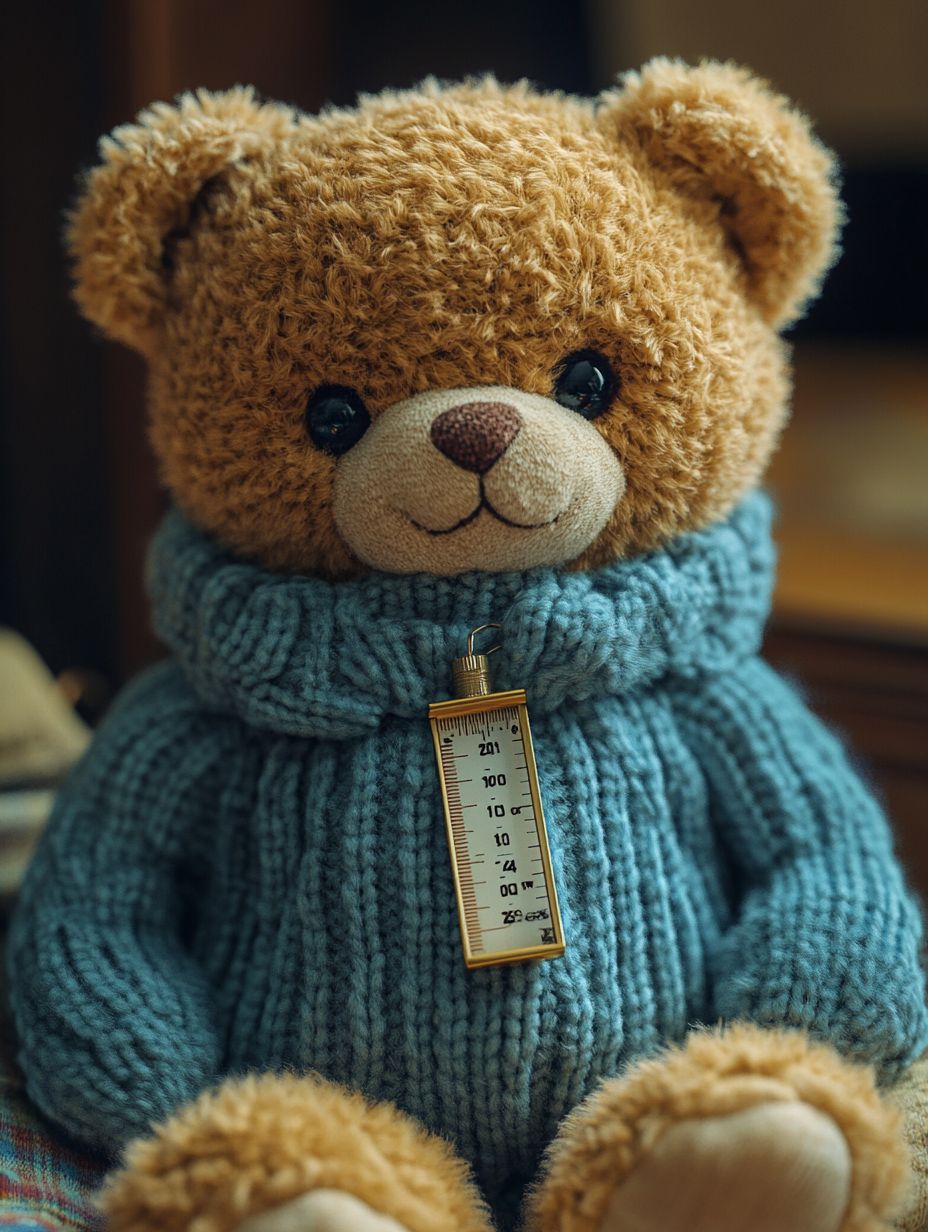
Finding the perfect spot for your beloved teddies isn't always straightforward, but it's worth taking the time to get it right.
You'll want to steer clear of any dodgy areas that might leave your furry friends feeling rather worse for wear – particularly those prone to dampness or sweltering heat. The sweet spot tends to be somewhere around 18-22°C, with humidity hovering at about 50%.
Whilst the loft might seem like a decent shout at first glance, these spaces can be absolute rubbish for storage. The temperature ups and downs would wreak havoc on your bears.
A spare bedroom cupboard makes far more sense, or perhaps those handy under-bed storage drawers you picked up from John Lewis. If you've only got the box room to work with, pop a dehumidifier in there – it'll keep things shipshape.
Whatever you do, don't chuck them in the cellar – that's asking for trouble. A nice, dry airing cupboard could be brilliant, mind you, as long as it's not cooking next to the boiler.
Got something particularly special, like Nan's prized vintage Merrythought? Might be worth splashing out on a proper display cabinet with UV-protective glass. That way, you can show off your collection whilst keeping it in pristine nick.
Control Temperature and Humidity
Getting the temperature right for your teddy bears is absolutely crucial – trust me, I've seen what wild temperature swings can do to a cherished collection.
You'll want to keep things steady between 18-21°C, with relative humidity hovering around 45-55%. Rather like the treasures in the British Museum, these beloved bears need proper protection from the elements.
Whatever you do, steer clear of lofts and cellars. Yes, they're tempting for storage, but they're absolutely rubbish for collectibles – what with the dodgy temperature shifts and that nasty damp that tends to creep in.
A spare room or cupboard makes far more sense, provided it's away from radiators and sunlight. Mind you, if you're proper serious about it all, a dehumidifier might be worth considering, especially during those wretchedly wet British winters.
Keep an eye on things with a thermometer and hygrometer – it's not as fussy as it sounds.
Too much moisture in the air and you'll be dealing with mould and moths (horrid little things), while too little can leave your bears' materials rather brittle.
Spot any condensation on the windows? Best sort that straightaway before your furry friends start showing signs of wear.
Clean Before Storing
Before popping your teddy bears into storage, they'll need a proper clean to get rid of all the muck that builds up over time. Most modern teddies can handle a bit of surface cleaning, though it's worth checking the care label first. If you've got an antique bear or something particularly special, you might want to leave it to the professionals.
For your everyday bears that can handle a wash, lukewarm water and a gentle detergent should do nicely. I've found a soft brush works brilliantly – just work it in gentle circles, especially around those well-loved bits like the face and paws where they tend to get a bit grubby from handling.
Mind you, if your bear's got any music boxes or mechanical bits, keep them well away from water.
Some bears are too delicate for a proper wash, and that's where a vacuum with a soft brush attachment comes in rather handy – just keep it on the lowest setting. A lint roller can sort out surface dust quite nicely too.
Whatever cleaning method you choose, make sure your bears are properly dry before storing them away – leave them in a well-ventilated spot for a good couple of days.
And if you've got something really special worth over £100, pop down to your local museum and have a chat with their textile specialist – they often know exactly how to handle precious old bears.
Protective Storage Containers
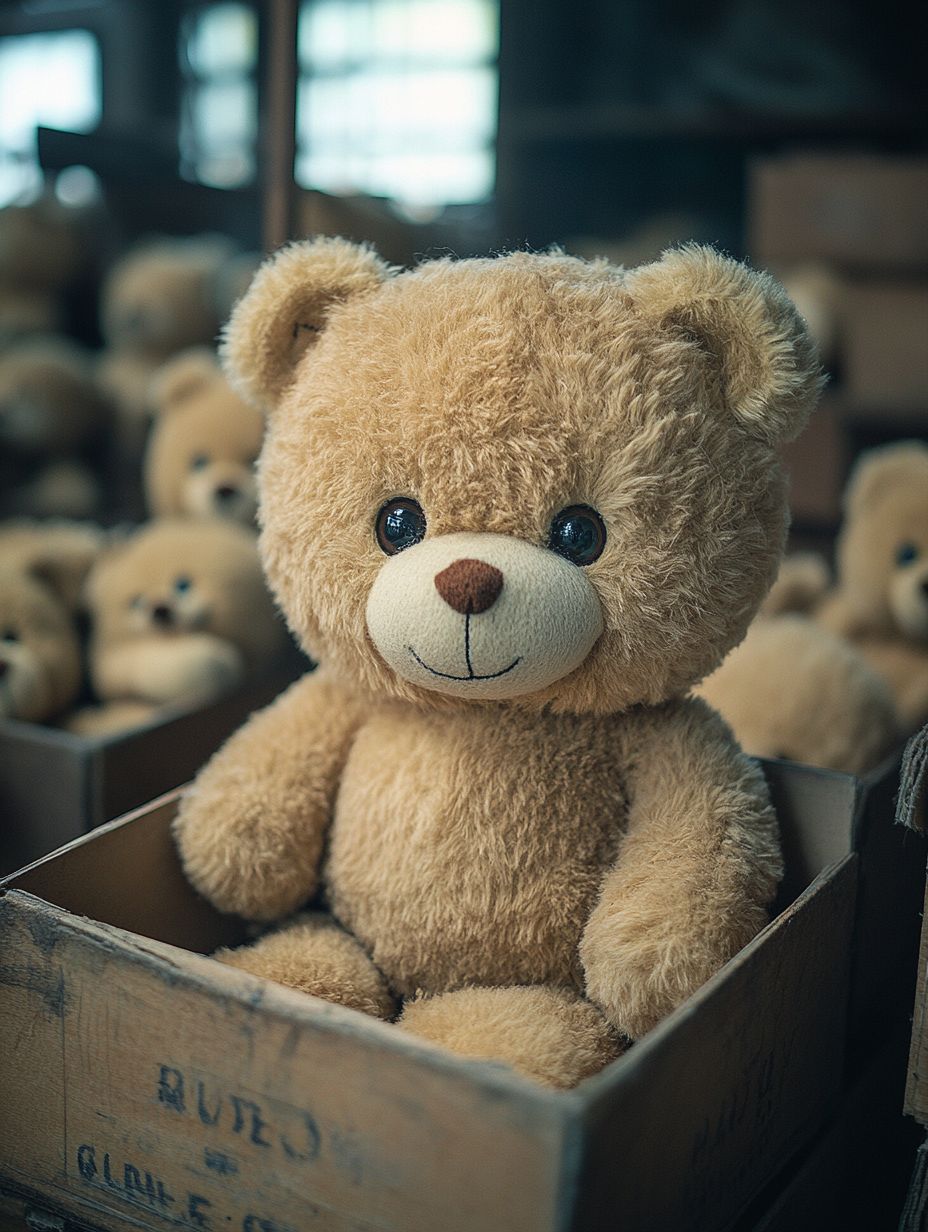
Right then, let's talk about keeping those beloved teddies safe and sound. After giving them a proper clean, you'll want to find the perfect home to store them in.
While those old cardboard boxes might seem tempting, they're rather rubbish for the long haul – they tend to go manky in damp basements and practically invite every moth in the neighbourhood round for tea.
I'm rather keen on clear plastic containers with snap-on lids myself – dead useful for spotting which bear is which without having to rummage about, and you can pick them up at Argos for about £15.
If you've got something particularly special, like gran's cherished bear from the war, you might fancy splashing out on acid-free archival boxes. Bit steep at £30-40, mind you, but they're brilliant for keeping vintage bears in pristine nick.
Vacuum storage bags are another decent shout, especially if you're tight on space in your flat. Just be gentle with the older bears – you don't want to squash the poor dears too much.
Whatever container you fancy, pop in some acid-free tissue paper for cushioning and chuck in a few silica gel sachets to keep the damp at bay.
For those really special ones – perhaps that century-old Steiff you inherited – wrapping them individually in muslin before tucking them away isn't a bad idea at all.
Proper Positioning Methods
Getting your teddy bears' positioning right in storage is absolutely crucial – it can make the difference between a well-preserved collection and a sorry lot of squashed companions. Pop each bear upright rather than flat, as this keeps their shape proper and stops those annoying creases from forming in their fur.
If you've got quite the collection (and who hasn't got carried away at jumble sales?), resist the urge to stack your bears like sardines. They need breathing room – about 2.5 cm between each one should do the trick. Short on space? The little chaps under 20 cm can sit in front of their larger mates, but mind you don't squash them together like they're on the Northern line at rush hour.
Older bears might need a bit of extra TLC. Tuck acid-free tissue paper around wobbly joints and necks – rather like giving them a gentle cushion to lean on.
Be particularly careful with bears sporting vintage bits and bobs; their accessories shouldn't be bearing any weight. For the ones with moveable parts, arrange them as though they're having a relaxed afternoon at home – nobody likes sitting ramrod straight for years on end.
This gentle positioning keeps their joints in good nick and ensures they'll stay wonderfully cuddly for ages to come.
Avoiding Direct Sunlight
Let's face it – sunlight is a proper menace when it comes to looking after your teddy bears. Even if you've got them arranged perfectly, those nasty UV rays can do a real number on your furry friends, leaving lasting damage to their fabric and making their colours fade something rotten. It's rather like that favourite jumper that's lost its sparkle after being left out on the washing line too long.
The best way to keep your bears safe from the sun's harsh rays is to be a bit clever about where you put them. Pop them at least 2 metres away from any windows – especially those facing south – and think about investing in some decent blackout curtains. You can pick up UV-filtering window film from B&Q or Homebase for about £15 per metre, which does the trick nicely.
As for display bears, giving them a quarterly shuffle (much like those chaps at Buckingham Palace) helps spread the exposure about.
Mind you, if you've got a conservatory or particularly bright spots in your home, you'll need to be extra careful. A darker room, perhaps a spare bedroom or airing cupboard, might be your best bet for storage.
And here's something people often forget – even sunlight bouncing off mirrors or shiny surfaces can cause trouble over time, so keep an eye out for sneaky reflected light when you're choosing spots for your bears.
Pest Prevention Techniques
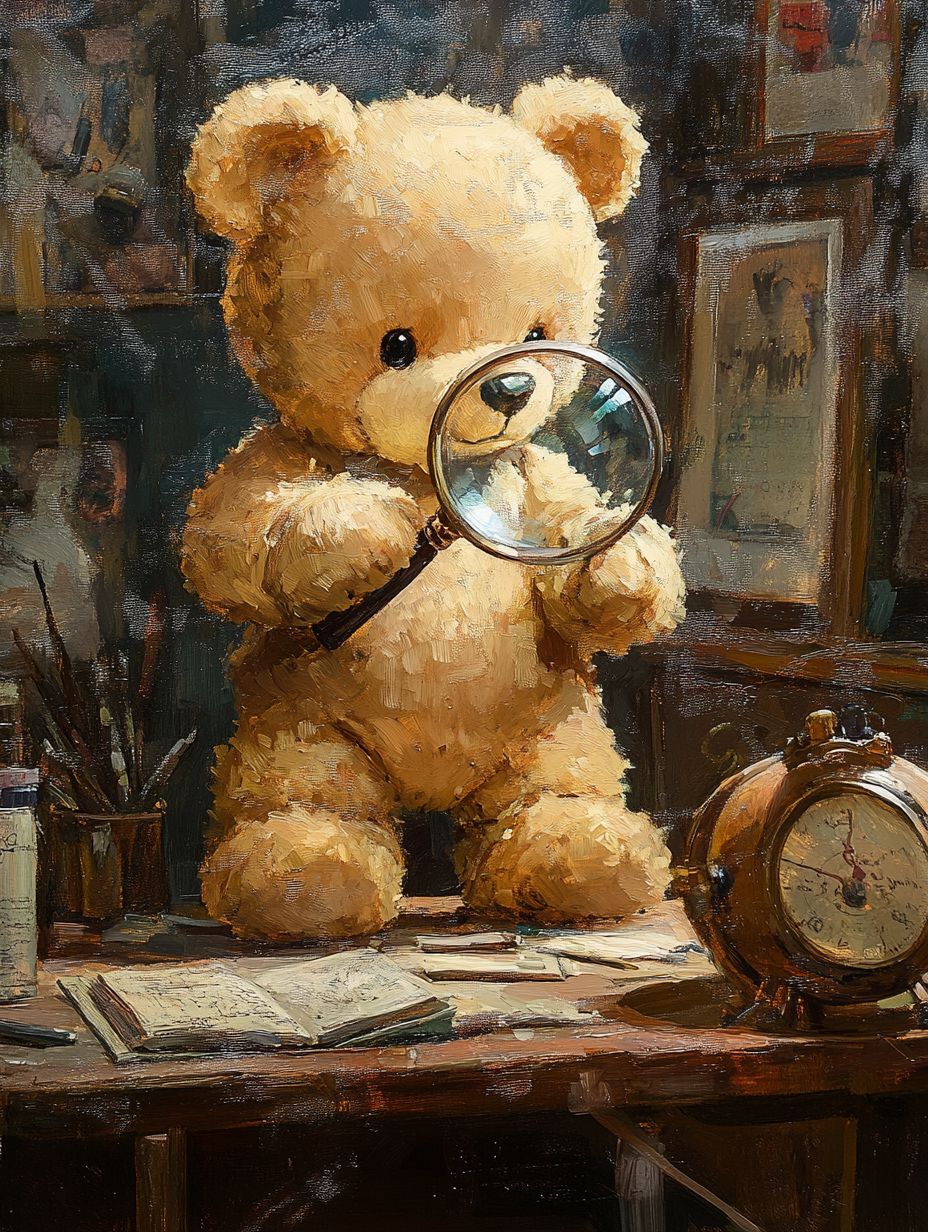
Regular inspections of your bears are absolutely essential – you'd be amazed how quickly those pesky moths can take hold.
Keep an eye out for the obvious signs: tiny holes in the fabric, loose bits of fluff, and those rather nasty sticky white trails that moths tend to leave behind.
If anything looks dodgy, don't hang about – isolate that bear straightaway from your collection.
Whilst it might seem a bit over the top, getting advice from a proper textile specialist could save your collection in the long run.
The Natural History Museum down in London has brilliant resources on dealing with these sorts of problems – they really know their stuff when it comes to preserving textile collectibles.
Regular Maintenance Schedule
Looking After Your Teddy Bears
There's something rather special about caring for a collection of teddy bears – it's not unlike tending to a vintage motor, really. These beloved companions need regular attention to stay in good nick, and a proper bit of maintenance will save you plenty of hassle (and pounds) down the line.
Once a month, you'll want to give your bears a proper once-over. Take a soft brush to their fur – this is particularly crucial for those pricey mohair fellows that might've set you back £500 or more.
Whilst you're at it, have a good look at the stitching and moving parts. Those old musical mechanisms can be frightfully delicate. I always recommend shifting their positions about a bit too, lest they develop awkward creases from sitting still too long.
Every few months, it's worth having a proper inspection. Pop them out of their display cases and check thoroughly for any unwanted visitors – those pesky moths can be absolute devils with vintage bears.
The glass eyes and embroidered features need special attention, mind you. If you've got something particularly precious, like one of those early Steiff bears, snap a few photographs for your records. The insurance chaps rather appreciate that sort of documentation, should anything go amiss.
Documentation and Inventory Systems
The paperwork side of collecting might sound frightfully dull, but proper documentation really is the backbone of any serious teddy bear collection. Much like the archivists at the British Museum (though rather more cosy), you'll need a proper system to catalogue your furry friends – complete with photographs, receipts and notes about what makes each bear special.
A simple spreadsheet works brilliantly for keeping tabs on the essential bits and bobs: who made it, when it was crafted, measurements in centimetres, and current value in sterling. Do make sure to jot down any charming quirks – whether it's a squeaker that still works, original tags, or that slightly wonky ear that gives it character.
It's particularly helpful to track any restoration work, perhaps with a few snaps showing how your bear has fared over the years.
Once your collection starts growing, you might fancy getting a bit more organised. A reference number for each bear certainly helps, especially when you're trying to remember which shelf you've tucked them away on.
Mind you keep those records safe – back everything up to the cloud, and pop any important papers in a fireproof box. Those certificates of authenticity and receipts are absolute gold dust, particularly for the more valuable chaps worth over £100.
And should you ever chat with an insurance broker about covering your collection, you'll be jolly glad you kept such thorough records.
Emergency Storage Plans

Looking After Your Bears in a Crisis
Let's be honest – no one likes to think about emergencies, but if you've built up a lovely teddy bear collection, you'll want to keep the little chaps safe when things go pear-shaped. A bit of forward planning can make all the difference between a proper panic and a manageable situation.
The heart of any emergency plan is a decent storage container. Pop down to your local DIY shop and pick up something sturdy – about 60cm x 40cm ought to do the trick. Make sure it's properly waterproof; those cheap plastic boxes from the pound shop simply won't cut it when you're dealing with precious bears.
Whilst you're sorting out the container, chuck in a handful of silica gel packets (you know, those little sachets that come with new shoes). They're brilliant at keeping the damp at bay. I'd also recommend moisture-absorbing sheets – they're a bit dear, but worth every penny for peace of mind.
Rather useful to keep a list of where all your bears usually live, actually. Just stick it inside the container lid – you'd be amazed how muddle-headed one gets in a crisis.
Keep the whole lot somewhere sensible, like the airing cupboard. Not the loft, mind you – you don't want to be scrambling up there when there's a flood warning!
Give your emergency routine a practice run every six months or so. Sounds a bit daft, perhaps, but you'll thank yourself when you're not rummaging about in the dark wondering where you put everything.
And do remember to update your plans whenever the collection grows – nothing worse than realising your favourite new bear won't fit in the emergency box!
Conclusion
Let's face it – proper storage might seem like a right faff when it comes to your treasured teddies, but trust me, it's worth every bit of effort you put in. These aren't just toys gathering dust in the loft – they're precious companions that deserve a proper home. Think about all those childhood memories, those late-night cuddles and imaginary tea parties. Brilliant stuff, really.
Mind you, it's not just about keeping them tidy. A well-organised storage system means your bears will stay in tip-top condition for years to come. The last thing you want is moth-eaten plush or loose stitching spoiling your favourite childhood friend. Pop them somewhere cosy and dry, and they'll be around for the grandchildren to enjoy – proper heirlooms in the making, if you ask me.

